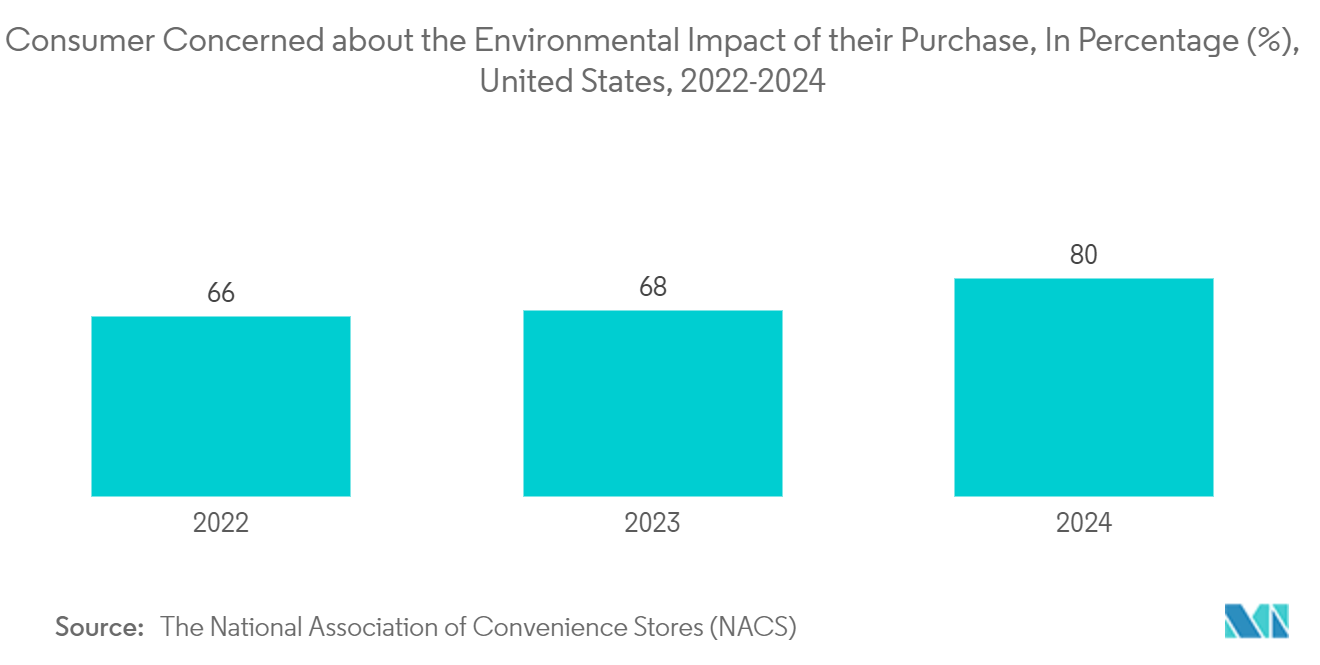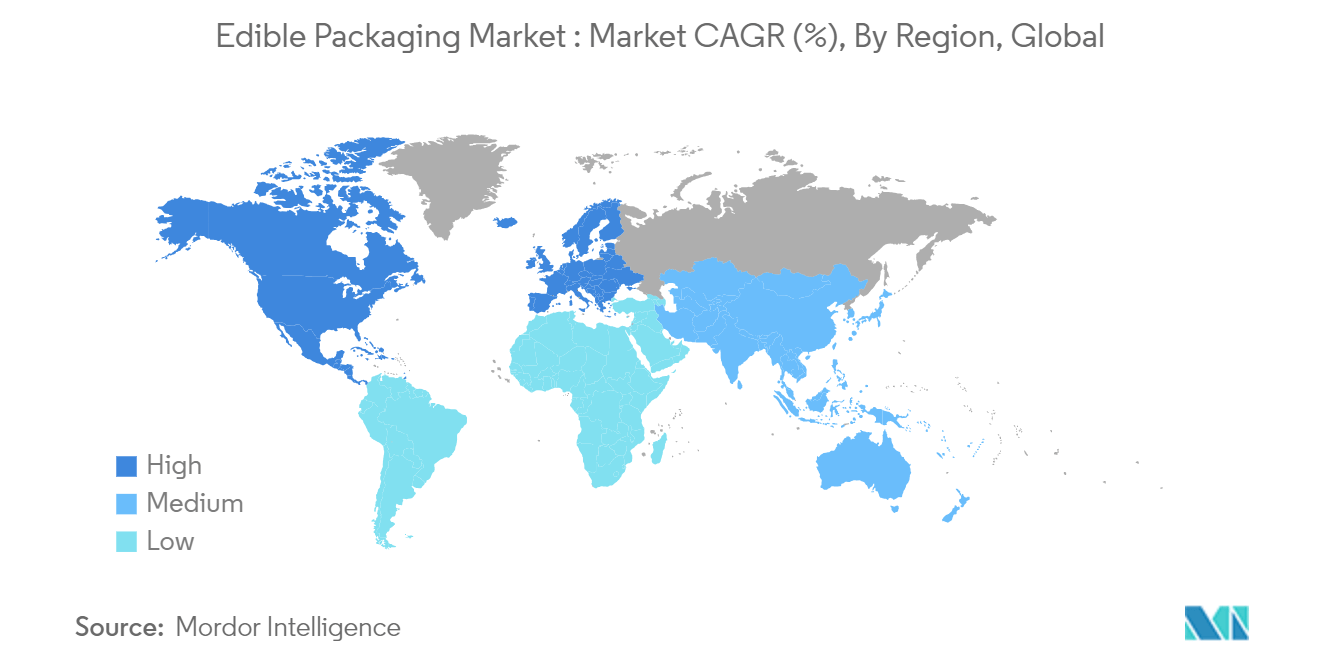Market Trends of Edible Packaging Industry
The Increasing Demand for Sustainable Solutions and the Need for Extended Product Shelf-Life are helping drive market growth
• Food packaging uses glass, paper, cardboard, metals, and plastic. However, plastic packaging causes many environmental problems. To address this, manufacturers are now focusing on biodegradable and edible food packaging from films and coatings.
• Edible packaging materials vary, including starch, collagen, zein, and gluten-based options. Additives are often added to these materials during film formation to improve their protective qualities. Each type of film has a specific function, mainly acting as a barrier to extend the food's shelf life. The main benefit of edible packaging is that it can be eaten along with food, reducing waste and environmental impact. It also offers physical and nutritional benefits compared to synthetic packaging.
• Consumers are becoming more health-conscious and interested in plant-based foods. In response, food manufacturers are working harder to extend shelf life and improve packaging technology to ensure food safety and preservation.
• At the same time, researchers and technological institutions are developing new edible films using different components, which helps the market grow. For example, in August 2023, the food tech startup Foodberry created plant-based edible coverings from fruit skins. These coverings help extend the shelf life of moisture-sensitive foods like ice cream and hummus.
• With growing concerns about climate change, plastic pollution, and other environmental issues, sustainable packaging is the best option. Businesses can significantly reduce their environmental impact using biodegradable or renewable materials like plant-based options.
• Additionally, more consumers are willing to pay extra for sustainable packaging. According to the National Association of Convenience Stores (NACS), a leading global trade association for convenience and fuel retailing, about 80% of consumers are now concerned about the environmental impact of their purchases, up from 68% in 2023 and 66% in 2022. This is expected to have a fair effect on the studied market.

A Sustainable Revolution in the European Region Aids the Market Growth
• Research and development (R&D) efforts are growing, particularly in regions like the United Kingdom. These efforts focus on creating edible packaging, often from materials like seaweed. The main goal for these innovators is to make packaging that's useful and safe to eat, avoiding traditional landfills and ocean pollution. Notpla Limited, a UK-based sustainable packaging company, is a great example. Notpla's work in seaweed-based packaging earned it the prestigious Earthshot Prize, a well-known award in the sustainable packaging field.
• Showing the practicality of these innovations, in April 2023, Notpla's product, Ooho, was a hit at a marathon in Gothenburg. Ooho replaced over 20,000 regular plastic cups, giving runners an eco-friendly way to hydrate on the go. Its all-natural, edible design improved the runners' experience and significantly reduced single-use plastic use.
• For example, Traceless, a German startup, has developed a new process that turns agricultural waste, like starch and brewery residues, into various products, from plastic films to hard materials. These materials, made from plant residues, are fully compostable. Depending on their thickness, they can break down in 2-9 weeks, either in a home compost bin or through anaerobic digestion, producing biogas. Such innovations are expected to boost the edible packaging market.
• The European Union's ban on single-use plastic products, including cups and straws, has dramatically affected market trends. Packaging manufacturers have quickly responded by introducing edible straws as a sustainable alternative. In April 2023, EdibleStraws, a leader in sustainable food solutions, launched its latest product, edible straws, further supporting the move away from traditional plastic and paper straws.
• The edible packaging market is significantly changing as the region faces growing sustainability concerns and stricter rules on single-use plastics. The market is set for solid growth with many players and increased R&D investments.



